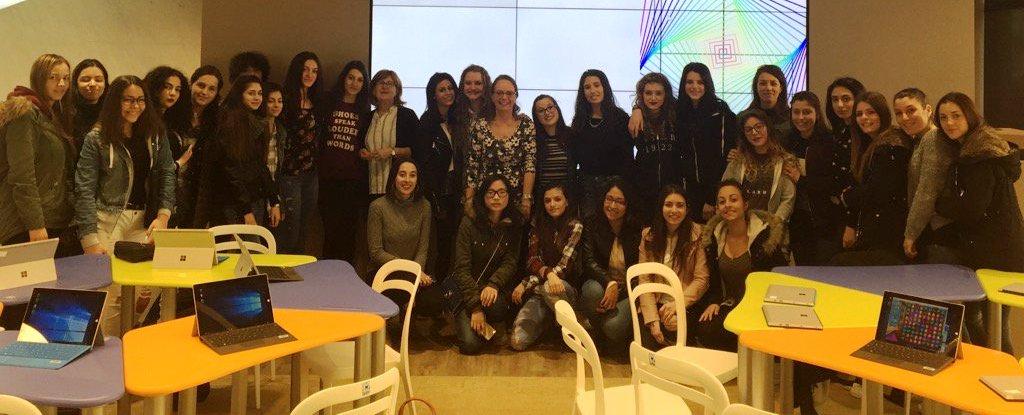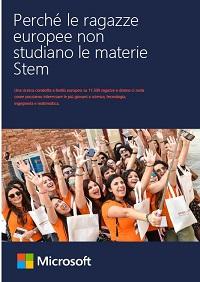For the launch of Pink Cloud 2017, Microsoft presented “European Girls in STEM”, the first study developed to define the moment in which young women lose interest in the study of technical and scientific subjects and their motivations. The report also investigates the motivation behind these decisions and identifies models and ways of preventing this decline to contrast the gender gap and stereotypes.
Pink Cloud was first developed in 2013 to promote the diffusion of digital competences through free training programmes for thousands of young women in Italy and abroad. Pink Cloud 2017, organised by Microsoft in collaboration with the Fondazione Mondo Digitale and growITup, will involve over 1500 students and young women from all around Italy. From March to December 2017, over 40 training courses will be held in the Digital Classroom at the Microsoft House and the classrooms at the Cariplo Factory, event promoter together with growITup and Microsoft, on the development of basic computer skills, coding, robotics and digital arts.
The official presentation was held today at the Microsoft House, which hosted the first class of 30 students from the Scuola Superiore Falcone Righi in Corsico (MI) for a course focusing on Touch Develop.

 The official launch of the new edition served as the opportunity to present the “European Girls in STEM” Report, the first truly complete European Study, commissioned by Microsoft to Prof. Martin W Bauer from the Department of Psychological and Behavioural Science at the London School of Economics (LSE). The study involved 11,500 girls and young women in Europe, aged 11-30, in 12 countries (Belgium Finland, France, Germany, Ireland, Italy, the Netherlands, Poland Czech Republic, Russia, Slovakia and the United Kingdom. The report identifies the moment in which young women lose interest in the study of technical and scientific subjects and their motivations. The report also investigates the motivation behind these decisions and identifies models and ways of preventing this decline to contrast the gender gap and stereotypes, that block so many job opportunities and promote a positive relationship with studies and employment.
The official launch of the new edition served as the opportunity to present the “European Girls in STEM” Report, the first truly complete European Study, commissioned by Microsoft to Prof. Martin W Bauer from the Department of Psychological and Behavioural Science at the London School of Economics (LSE). The study involved 11,500 girls and young women in Europe, aged 11-30, in 12 countries (Belgium Finland, France, Germany, Ireland, Italy, the Netherlands, Poland Czech Republic, Russia, Slovakia and the United Kingdom. The report identifies the moment in which young women lose interest in the study of technical and scientific subjects and their motivations. The report also investigates the motivation behind these decisions and identifies models and ways of preventing this decline to contrast the gender gap and stereotypes, that block so many job opportunities and promote a positive relationship with studies and employment.



